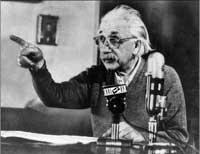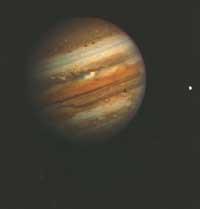Gravity is not instantaneous
Newton thought that gravity is instantaneous, that is, from the moment there is mass there is gravity. But Einstein, through the theory of general relativity, explained the character of gravity: one of the consequences of this theory is that the gravitational field is "enlarged".

For example, the light takes eight minutes to travel the journey between the Sun and Earth, so the sunlight we just saw departed from that star eight minutes ago. Likewise, the zone of the Sun has created eight minutes ago the gravitational force that supports the Earth at this time. This means that if the Sun suddenly disappears, for eight minutes we would not notice anything, nor that the light has been turned off, nor that the Earth has escaped from the orbit.
Measurement of measurement
To reach this conclusion, some American astronomers have used the planet Jupiter. They have needed very special conditions: In September 2002, seen from Earth, Jupiter passed by a quasar. The quasars are radio wave emitting galaxies, so with a radio telescope you can locate exactly the quasar.

But the gigantic mass of Jupiter worsens the trajectory of the waves that come directly to Earth when it is very close to them. These waves that are being transmitted directly slide sharply when passing by Jupiter. Seen from the earth, the quasar seems to have moved.
Therefore, knowing the mass and exact velocity of the planet, one can calculate whether the effect of gravity is instantaneous or not. Astronomers have seen that gravity is not instantaneous, but is "transmitted" at the speed of light.
Buletina
Bidali zure helbide elektronikoa eta jaso asteroko buletina zure sarrera-ontzian











